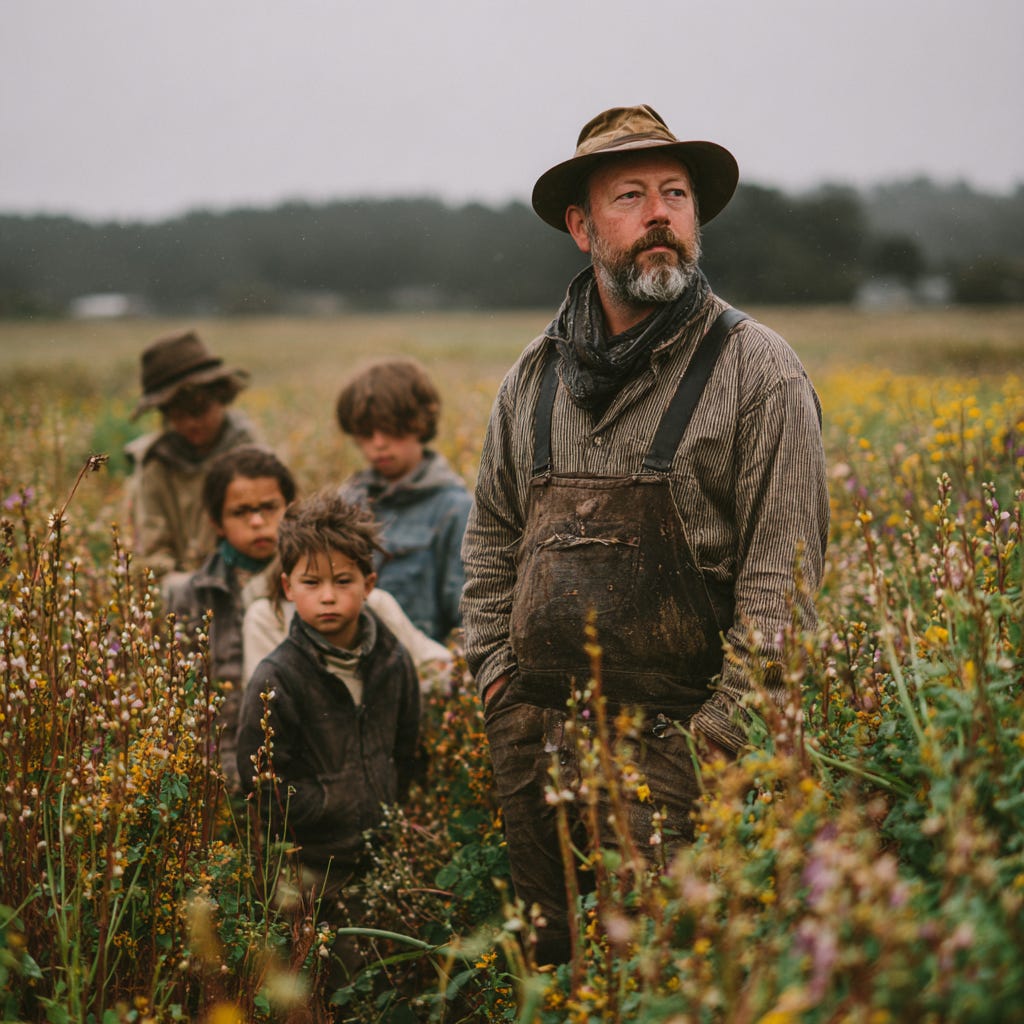For too long, the return journey of Mexican farmers from the U.S. has been told as a story of loss. But what if it’s actually a homecoming? With if it is a return not only to land but to purpose?
Across Baja California and beyond, something powerful is stirring. Farmers are coming back to heal not just soil, but soul. And in that healing, a new economy and a new ecology is emerging.
Turning Salt to Soil in Mexicali
Mexicali Valley. Dry. Cracked. Tired land.
Decades of extraction, too much water, too many chemicals has left it hollow. But now, under the shade of mesquite trees, hope is returning.
Javier Mosqueda, age 66, and Mario “Don Beto” Meza aren’t just farming, they’re regenerating. With support from Restauremos el Colorado, they’ve reimagined their fields. Think silvopasture: native trees, livestock, bees, chickens, milpa crops. All of this dancing together in a living ecosystem.
The clay-salt earth, once lifeless, is healing. Manure enriches it. Birds, bees, and biodiversity are coming back. Pasture is green again. Water cycles are recovering. “People laughed at us,” Don Beto says. “Now they come to learn.”
This isn’t theory. This is a blueprint.
Soil Miracles in Pescadero
Down south, in the coastal soils of Pescadero, Jan Federico William Loeffler Bird has done what many said was impossible. In just two years, he doubled the organic matter in his soil from 0.74% to 1.48% on a modest 4,000 m² plot.
Translation? Eighteen metric tons of carbon drawn from the sky and tucked back into the ground. That’s like canceling out the emissions from burning 2,000 gallons of gasoline.
How? Cover crops, sunflowers, oats, legumes. Diversity.
Not just above ground but below. Microbes flourish. Water holds. Cucumbers grow chemical-free. Pumpkins thrive.
Dr. Andrei Aguilar and Gabriela Huerta, local ranchers, are bringing these same practices to their land. Families are feeding families again with food grown in soil that’s alive.
This Work Pays—In More Ways Than One
Let’s be clear. Regeneration isn’t charity, it’s smart economics.
When you cut the synthetic fertilizers, when you ditch the pesticides, your costs drop. When your soil gets healthy, your yields climb. As Jan says, “Two to four times more food per acre.”
And the numbers back it up: farms that go regenerative often see 78% greater profitability. That’s not a typo. That’s the future.
Food hubs in La Paz, built by groups like Sueño Tropical and the ASA cooperative, are making it easier for farmers to reach local chefs, grocers, and hotels. This is food sovereignty. This is infrastructure for a regenerative future.
Why This Matters To All of Us
Every hectare that heals becomes a sponge for carbon. Every local sale reduces dependency on global supply chains. Every bite of agrochemical-free food is a step toward public health.
But the deepest change? It’s cultural. Families are reconnecting with ancestral land. Children are learning not just how to plant, but how to steward.
The Bigger Picture: Regeneration Across Mexico
This isn’t isolated. From desert fringes to mangrove estuaries, communities are reforesting with native trees, restoring coasts, and reinventing livestock systems that work with, not against, nature.
What was once written off as dead land is now a cradle of rebirth.
And this isn’t just agriculture. This is alchemy. Turning broken ground into sacred ground. Restoring more than soil, restoring identity, dignity, and a future worth believing in.
Want to Be Part of This?
I’m listening to these stories, connecting farmers with allies, and working to amplify what’s already working.
👉 If you want to help through funding, partnerships, or storytelling, reach out. Together, we can bring light to the quiet miracle that’s happening across Mexico.
Because regeneration isn’t just a method. It’s a movement. A return. A revolution of the soil and the soul.








Great story Josh....looking forward to future updates!